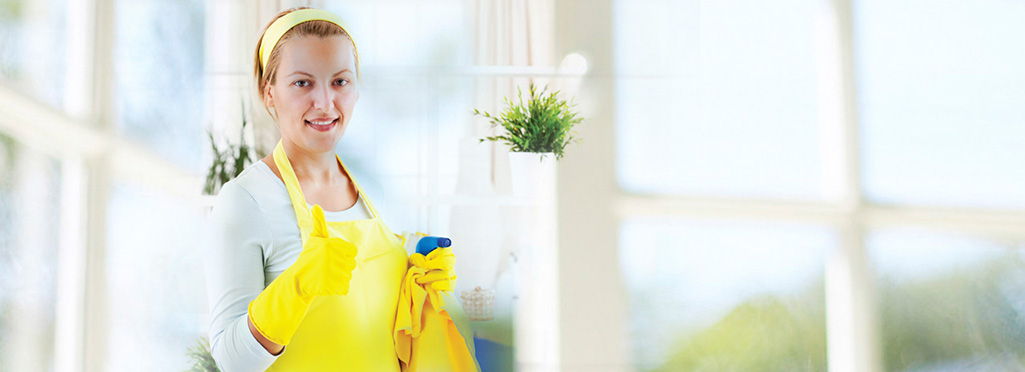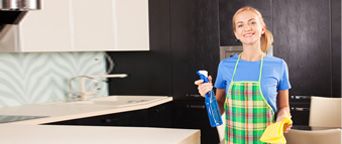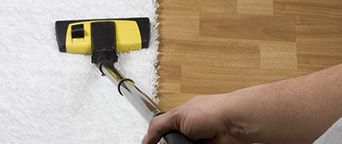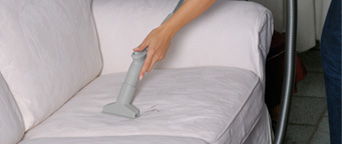Effortlessly Remove Burnt-on Stovetop Residue
Posted on 26/08/2025
Effortlessly Remove Burnt-on Stovetop Residue: Your Complete Guide
Burnt-on residue on your stovetop isn't just unsightly--it can also reduce the efficiency and lifespan of your kitchen appliance. If you're tired of scrubbing for hours, only to see that stubborn residue remain, you've come to the right place. This comprehensive article will show you how to remove burnt-on stovetop residue effortlessly, so your stove sparkles like new.

Understanding Burnt-on Stovetop Residue
Before tackling the issue, it's important to understand what causes burnt-on residue. Whether you have a glass, ceramic, or traditional gas stovetop, high temperatures cause food spills, oils, and grease to carbonize onto the surface. Over time, this creates tough, sticky, and even rock-hard build-up that typical wipes can't remove.
- Glass Stovetops: Prone to visible marks and scratches, requiring gentle but effective cleaning methods.
- Gas Stovetops: Usually consist of removable grates and drip pans, where spills often become baked onto the metal surfaces.
- Ceramic Stovetops: Feature delicate surfaces, susceptible to scratching if ragged tools are used.
Leaving burnt-on residue unchecked can lead to:
- Reduced heating efficiency
- Foul odors that linger in your kitchen
- Permanent stains and surface damage
The Essential Tools and Products for Cleaning Burnt-on Stovetop Grime
To remove burnt-on stove residue like a pro, you'll need the right supplies. *Here's what you should gather before you start:*
- Soft sponge or microfiber cloths
- Plastic or silicone scraper (never use metal)
- Non-abrasive cleaning pads
- Baking soda
- White vinegar
- Hot water
- Lemon juice (optional, for extra degreasing)
- Commercial stovetop cleaner (if preferred)
Tip: *Avoid steel wool, sharp blades, or other abrasive materials.* These can scratch and permanently damage your stovetop surface.
Step-by-Step: Effortless Burnt Stovetop Residue Removal
1. Safety First
- Always ensure your stovetop is off and completely cool before starting any cleaning process.
- Unplug electric stove elements if possible, or remove gas grates for easier cleaning.
2. Remove Loose Debris
- Wipe away any loose food particles or crumbs using a damp cloth.
3. Apply a Cleaning Solution
- For natural cleaning: Sprinkle a generous amount of baking soda over the burnt areas, then slowly pour hot water over it to form a paste.
- For grease-laden stains: Add a few drops of lemon juice or white vinegar to the mixture.
- Let the solution sit for 10-15 minutes to break down the stubborn residue.
4. Scrape Gently
- Use a plastic scraper or specialized stovetop blade (specifically designed for glass or ceramic tops) to gently lift residue. Never use metal tools, which can scratch the stovetop.
5. Wipe and Rinse
- Wipe off all the loosened grime using a microfiber cloth dampened with clean water.
- Repeat the process if any burnt-on bits remain.
6. Finishing Touch
- Once the residue is gone, finish with a streak-free polish: lightly buff the surface with a dry, soft cloth for that sparkling finish.
- If desired, use a commercial stovetop cleaning spray, following manufacturer instructions for extra shine and protection.
How to Remove Burnt-on Food from Glass and Ceramic Stovetops
Glass and ceramic stovetops are popular for their sleek and modern appearance, but they are also notorious for showing off every spill and splatter. To remove burnt-on food from these delicate surfaces, you need a gentle yet effective approach to avoid scratches or dulling.
Recommended Method:
- Sprinkle baking soda generously over the burned area.
- Soak a towel in hot water and wring slightly, then lay it over the baking soda on the cooktop.
- Let it sit for 15-20 minutes to help soften the burnt-on debris.
- Wipe away the mixture using a damp microfiber cloth; repeat as needed.
- For tough spots, use a plastic stovetop scraper at a 45-degree angle, gently pushing away the residue.
- Buff with a clean, dry cloth for a brilliant sheen.
Extra Tips:
- For repeated or stubborn burnt-on residue, invest in a specialized ceramic/glass stovetop cleaner.
- Always refer to your manufacturer's guidelines to avoid voiding your warranty.
How to Clean Burnt-on Residue from Gas Stovetops and Grates
Gas stovetops can accumulate burnt-on residue not only on the surface but also on grates and burner caps. Here's how to thoroughly clean every part of your gas stove.
Cleaning the Surface
- Remove all grates and burner caps.
- Wipe away loose debris.
- Apply a paste of baking soda and water to stubborn spots; let sit for 15 minutes.
- Use a soft brush or non-abrasive pad to scrub burnt-on grease and food residue.
- Wipe with a damp cloth and dry with a soft towel.
Cleaning Gas Grates and Burner Caps
- Soak grates and burner caps in hot, soapy water for 20-30 minutes.
- Scrub gently with a soft brush or non-abrasive scrub pad.
- For heavier build-up, create a paste with 3 parts baking soda to 1 part water and let it sit on the stains for 30 minutes before scrubbing.
- Rinse thoroughly and allow to air dry or dry completely before reassembly.
Natural Remedies for Burnt-on Stovetop Residue
Eco-friendly stovetop cleaning can be both effective and safe for your home and the environment. Here are the top natural remedies:
- Baking Soda: Acts as a mild abrasive to lift stubborn residue without scratching.
- White Vinegar: Dissolves mineral deposits and helps cut through grease.
- Lemon Juice: Natural degreaser with a pleasant fragrance.
- Hydrogen Peroxide: When combined with baking soda, it can tackle the toughest, oldest burnt stains.
How to Use Natural Ingredients Effectively
- Baking Soda + Vinegar: Cover burnt area with baking soda. Spray or pour vinegar over it to create a fizz. Let sit, then scrub and wipe clean.
- Hydrogen Peroxide Paste: Mix hydrogen peroxide with baking soda to form a paste. Apply, rest 10 minutes, then scrub and rinse.
Prevent Future Burnt-on Stovetop Residue
A little daily maintenance helps avoid the headache of heavy-duty stovetop cleaning. Here's how to prevent burnt-on stains:
- Wipe spills immediately after the stovetop cools to prevent them from hardening.
- Use stovetop covers or mats when cooking ingredients prone to splatter.
- Clean grates and drip pans weekly, even if they appear clean.
- Deep clean monthly using the routines described above to keep build-up at bay.
When to Call for Professional Cleaning Help
If your stovetop residue proves impossible to clean, or if you're worried about damaging a high-end appliance, it may be time to call a professional cleaning service. Certified technicians have the tools, experience, and products to safely restore your stove to pristine condition.
- Persistent burnt-on residue resisting all cleaning attempts
- Delicate or specialty stovetop materials (induction, luxury glass)
- Concerns about using chemicals or improper tools

Frequently Asked Questions About Effortlessly Removing Burnt-on Stovetop Residue
Can you remove burnt stains from a glass stovetop without scratching?
Absolutely. The key is to use plastic or silicone tools and stick with gentle abrasives like baking soda or non-abrasive pads. Never use steel wool or rough scrubbers.
Is it safe to use commercial oven cleaner on my stovetop?
Not always. Many oven cleaners are too harsh and can damage glass or ceramic stovetops. Always check your stovetop's care instructions and opt for products labeled safe for your surface type.
How often should I clean my stovetop to prevent burnt-on residue?
Ideally, wipe your stovetop after every use and deep clean at least once a month. Prevention is far easier than removing tough, burnt-on stains!
Key Takeaways: Achieve a Spotless Stovetop with Minimal Effort
- Preparation is crucial: Gather the right supplies and ensure your stove is cool before starting.
- Natural remedies--like baking soda, vinegar, and lemon juice--work wonders for most burnt-on residue without causing damage.
- Gentle, methodical cleaning prevents scratching and surface damage. Avoid metal tools and harsh chemicals unless specified for your model.
- Regular maintenance keeps your stovetop sparkling and prevents stubborn build-up.
- For extreme build-up or delicate surfaces, consider professional cleaning services.
With these effortless stovetop cleaning techniques, you can remove burnt-on stovetop residue and restore your kitchen's shine without hassle. Implement these strategies now and enjoy a cleaner, more efficient, and hygienic cooking space every day!
```






